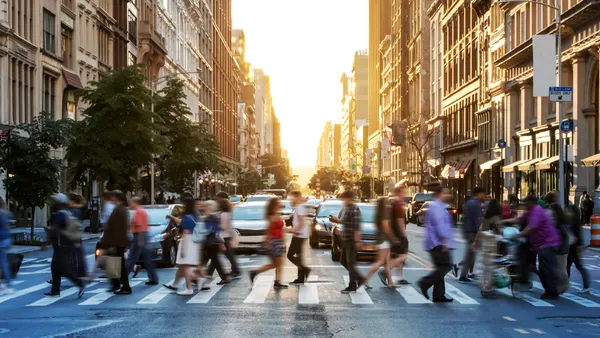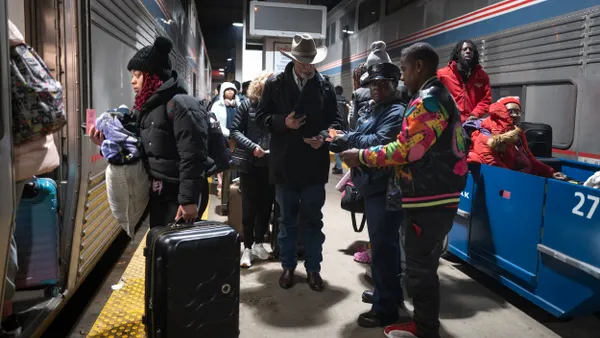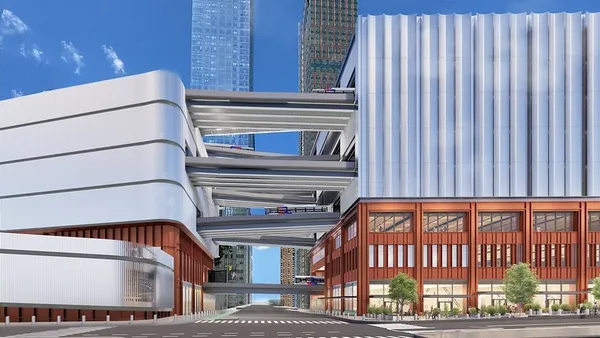Dive Brief:
- As cities embrace new technologies and approaches to combat challenges, a new white paper from ABI Research, 5 Ways Cities Are Getting Smarter, examines the top strategy shifts that are currently making cities more advanced and efficient.
- The paper identifies five main strategy shifts:
- Digital twins — 3D urban modeling and generative design is transforming city planning and creating entire digital twins cities, and artificial intelligence (AI) tools hold even more promise.
- Resilient cities — Cities are shifting their focus from "safe and secure" to "resilient" in the use of technology to protect citizens from natural and human-made threats.
- Circular cities — Sustainability has been a key element of creating smart cities and aiming for a circular city advances the concept even further.
- Micromobility — Cities are embracing electric, two-wheeled micromobility devices (bikes and scooters) to reduce congestion and air pollution.
- Smart spaces — Cities are rethinking the urban built environment and how technology can be integrated into public spaces for widespread benefits.
- The paper presents challenges and case studies for the five key strategies. It concludes that "[b]older, more holistic, cross-vertical and closed-loop approaches are required to optimize and maximize the potential of available resources and services."
Dive Insight:
An implied underlying theme of the report is that the smart technology adopted by cities should have a clear purpose. The white paper also indicates that, because technology is so beneficial to cities, leaders should more readily embrace and invest in it to solve a shifting and expanding set of urban problems such as cyber attacks and climate change.
"[I]t is an illusion to believe that adding just a shallow layer of IoT technology to legacy urban environments will allow cities to address the urban challenges of the future, ranging from the provision of sustainable energy to the adoption of smart mobility and the construction of resilient cities," said ABI Research Vice President Dominique Bonte in a statement.
The report authors acknowledge that cities face numerous difficult factors that can prevent technology uptake. Cost, funding sources, technology life-cycle management, understanding technology benefits/ROI and privacy and security all require solutions before adoption. But overcoming these issues and integrating sustainable IoT solutions in many cases addresses urban challenges more efficiently and at a more thorough level than humans currently achieve.
Leveraging advanced technologies such as AI is a recurring theme throughout the white paper. The predictive nature of AI and deep learning can take a variety of city functions to the next level, from planning evacuations to avoiding disasters before they occur. It's expected to continue to make cities smarter in ways not yet realized or widely discussed.
The report reflects that the smart city space is dynamic and continually evolving. While that can make it difficult to nail down one definition for "smart city," it also allows leeway for leaders to take the concept in the best direction for their own city.
For example, micromobility is a key modern strategy, but each individual city determines the devices, operating companies, regulations and governance for micromobility in their own area. Likewise, individual cities determine how best to develop and expand smart spaces such as repurposing parking lots or incorporating LED lights into pavement for smart crosswalks.










